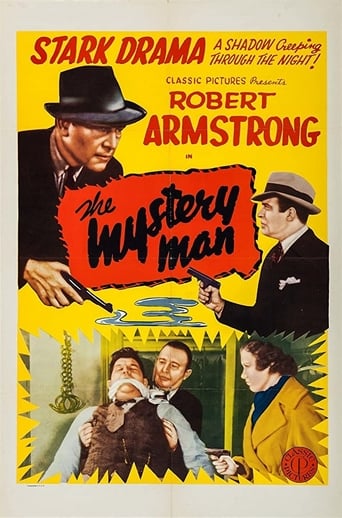Paularoc
I like Monogram movies - you can generally be sure of two things - (1) the movies will be entertaining and (2) there will be either a silly plot or a plot with big enough holes in it to drive a truck through. And this movie is no exception. Robert Armstrong's Larry Doyle is a cock-sure but good reporter for a Chicago newspaper. The police respect him (indeed, they give him a gun to show their appreciation for his help with a case) but his editor can't stand him. Larry spends his $50 bonus on treating his pals to a night on the town. His editor fires him but Larry goes on celebrating and winds up in St. Louis where he befriends a down and out but spunky young woman, Anne Ogilvie (played by Maxine Doyle). One of my favorite bits in the movie is where Larry secretly pays for the Anne's coffee and donut when she finds out she doesn't have enough money. Larry sees himself as the Anne's protector and because of Larry's moxie, they end up staying in a hotel suite (with two bedrooms). In spite of his former editor's trying to prevent it, Larry eventually gets a job on the St. Louis News. He is soon hot on the trail of the notorious criminal known as "The Eel." The rest of the movie doesn't make much sense but all's well that ends well. Armstrong does a good job but does not do the snappy reporter type as well as Chester Morris or Wally Ford. However, he does such scenes as that at the coffee shop better than they so it all evens out. I had never heard of Maxine Doyle and she did a somewhat surprisingly good job as Anne. A pleasant enough way to spend an hour.
MikeMagi
When you screen an old movie, there are a few obvious signs as to its quality. Take the Monogram logo, for example. You know that the script will be a rough draft, that production will take only a week or so and that the acting will range between passable and clunky. On the other hand, it might even be entertaining. Which "The Mystery Man" actually is, even when it staggers along. Robert Armstrong stars as an intrepid newspaperman who winds up, after a drunken spree, in St. Louis where he's determined to restart his career by catching the mysterious criminal known as "The Eel." Somewhere along the way, he gets mixed up with a plucky, dead-broke brunette who masquerades as his wife for reasons that make no sense. But why worry about reality? It's...drum roll, please...a Monogram Picture. And that's almost as good as a PRC release.
tedg
Cinematic archeology is what this is all about. The film has lost all its appeal as the hooks have gone out of style. But we can see major chunks that have evolved to what we have now.The basic setup is the fold of a reporter as a detective, a miraculously simple concept in narration, as his job is to 'get the story.'He has an easy hookup with a perky girl, though cleanly post-code.Our reporter is an adventure-loving party man (which then meant an occasional drunk) who cannot keep money and who hates authority.The environment is one in which police are inept and essentially invisible, and 'the paper' runs the town behind the scenes. You can easily see the seeds of noir here.Oh, and we have a stereotyped villain, a mystery man who calls himself The Eel and who calls to taunt police (represented by the DA).Good digging here, if you have the patience.Ted's Evaluation -- 2 of 3: Has some interesting elements.
dongwangfu
This uneasy cross between a "Front Page" style newspaper yarn and a cops and robbers movie was entertaining at times but never really dramatically engaging. It was made less than a decade after the stage version, and only a few years after the Menjou/O'Brien version of Front Page. The comedic elements in the first part of the movie, as well as some funny ironic dialog come out of the interactions between news hound Larry Doyle, his editor, and his fellow reporters, come from that style of film. Halfway through, we leave that movie and enter into a crime flick, with a decent ingénue mistaken for Mrs. Doyle (played by an actress who was really named Doyle, by the way) and a case of mistaken identity leaving the reporter holding the bag. The resolution is not very clever, and the light tone of the first part of the movie means we're never really worried something bad will happen in the second. I mean, if it had been made in the 1970's, that may have happened, but in 1935, no way.There's a really neat moment at the end, though, that illustrates how in the 1930's everyone knew that newspapers could make or break elected officials, and how the publishers could influence what was published. I don't know when we lost that breezy cynicism about money and media, but I prefer it to the sacred cow of editorial independence that characterized the movies about the media I watched growing up. Doesn't really save the movie, but it is an interesting difference from things 75 years ago.



 AD
AD



